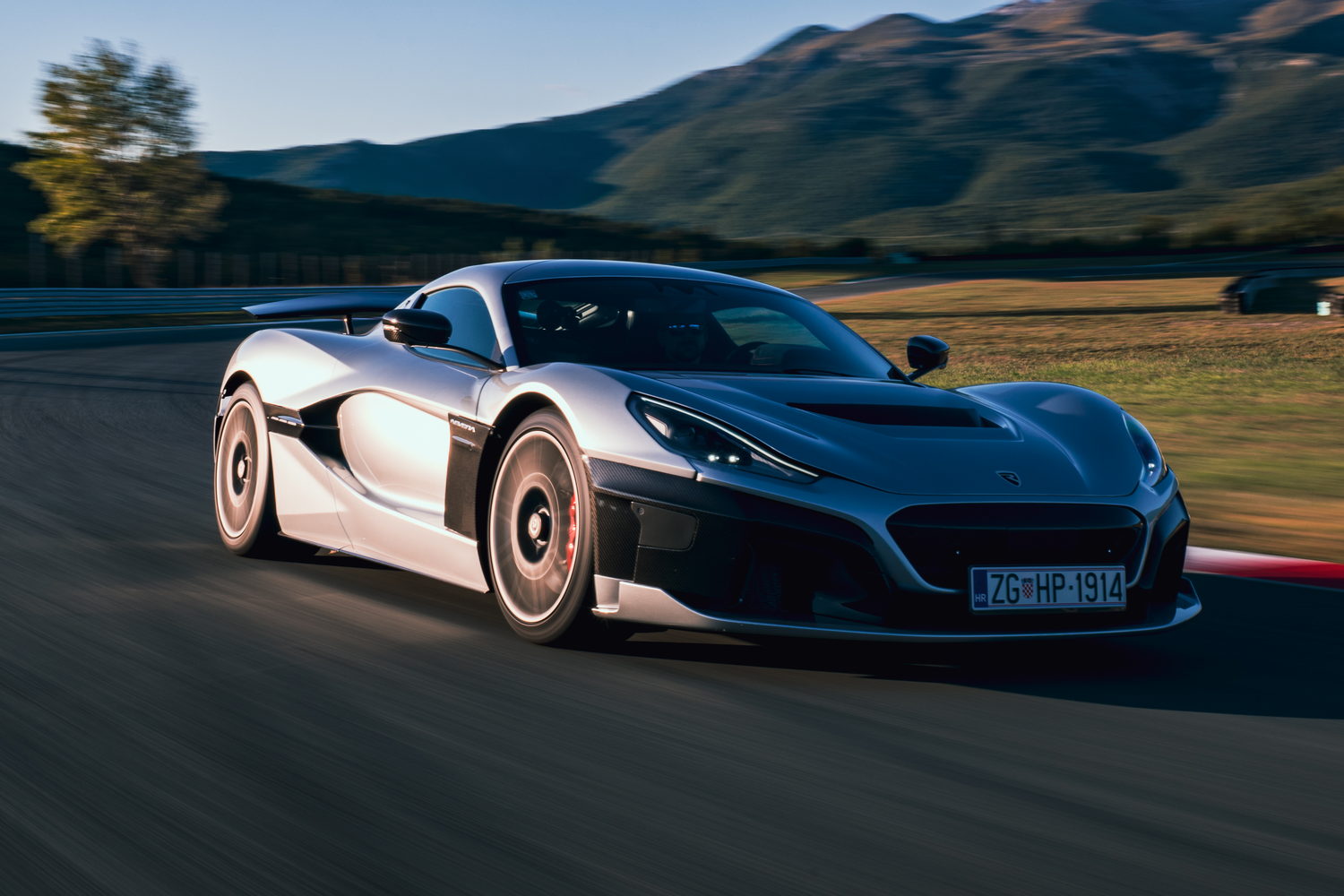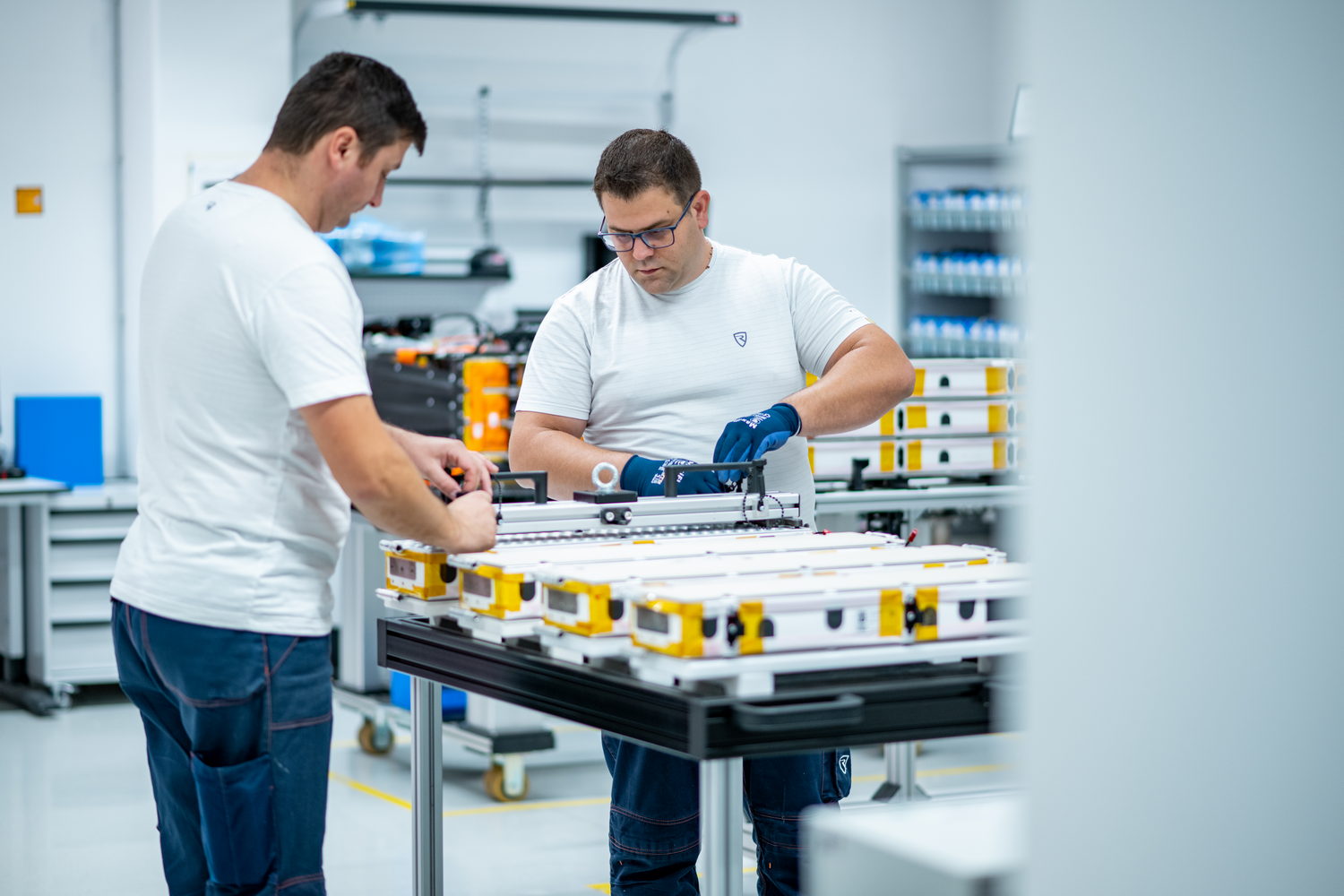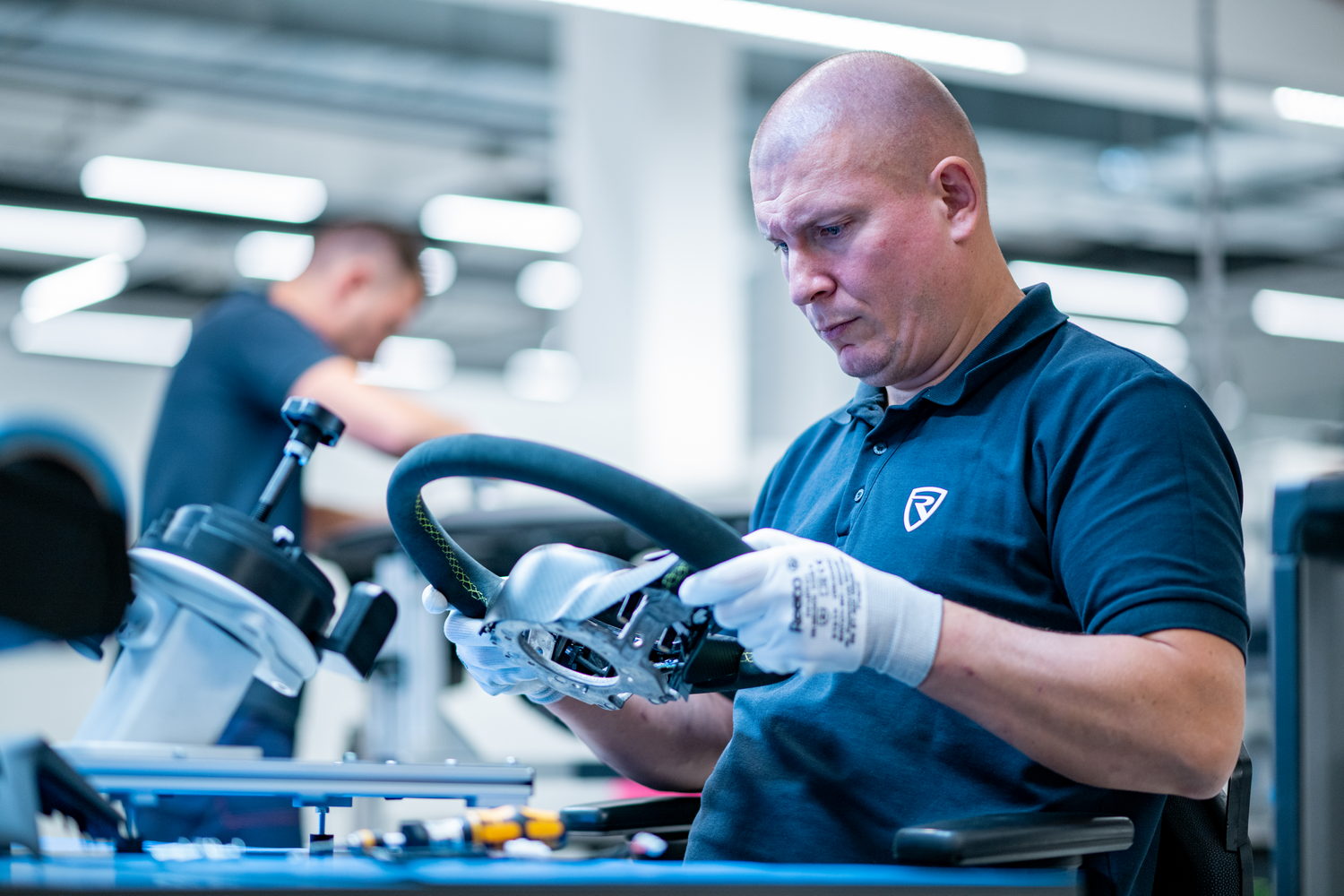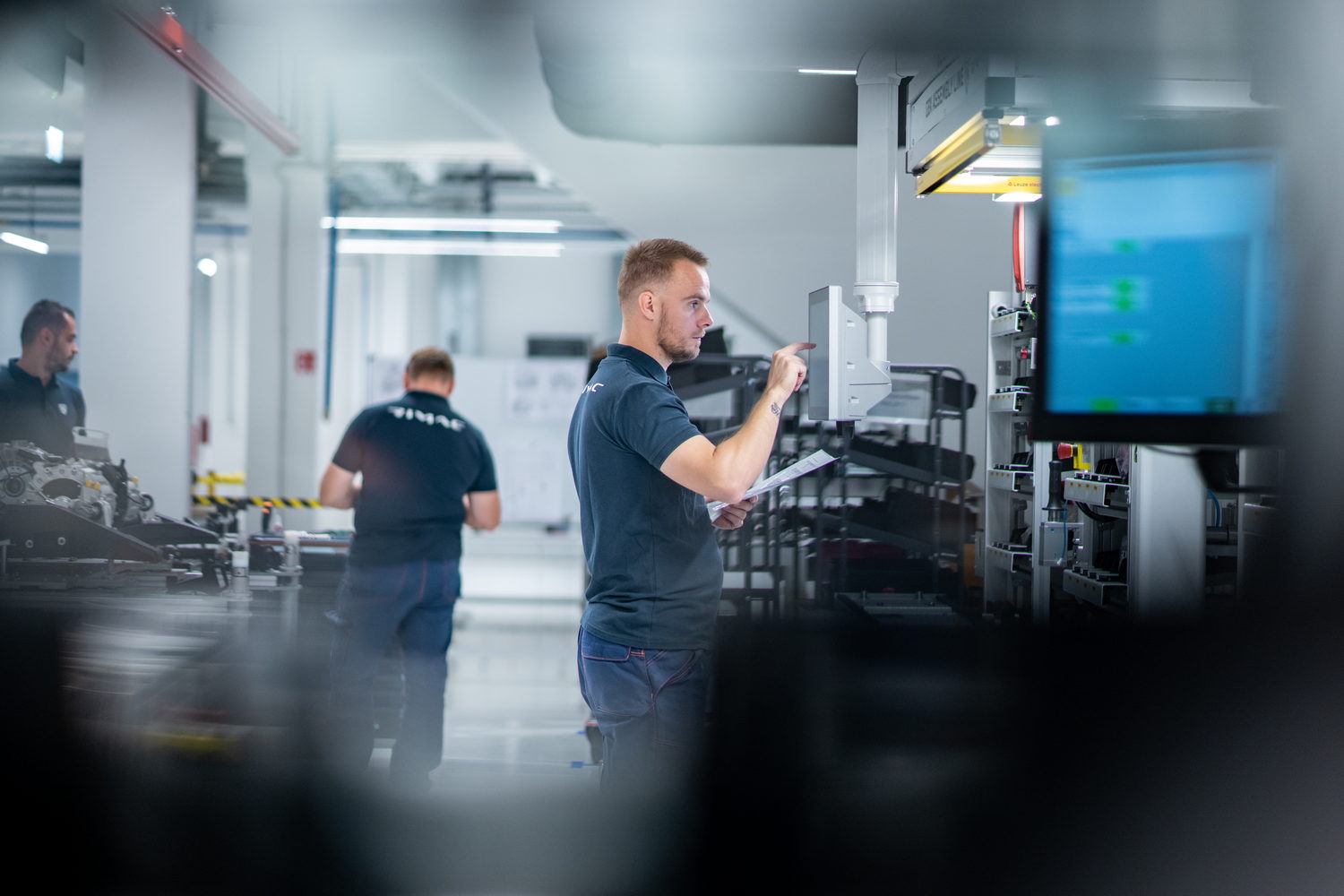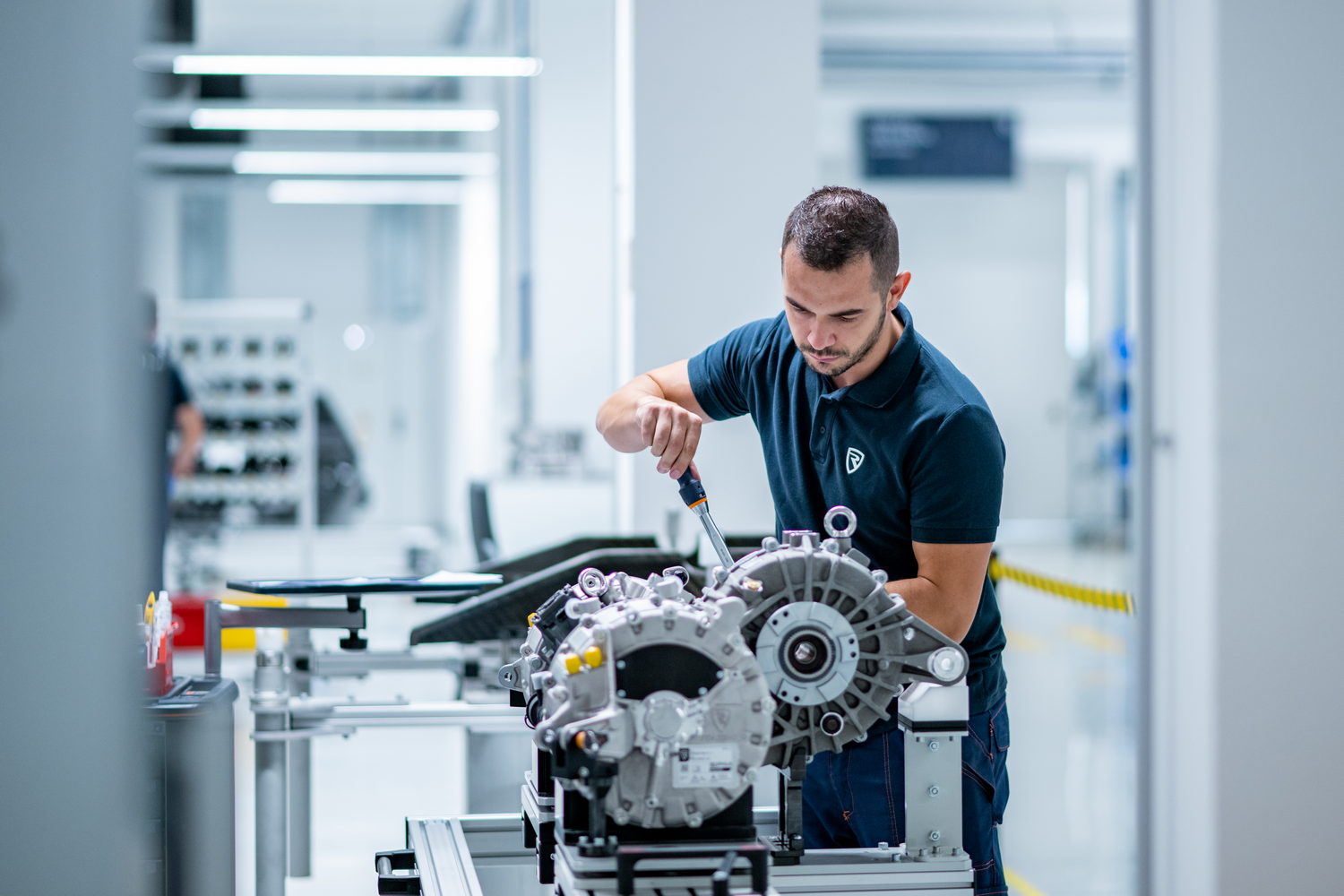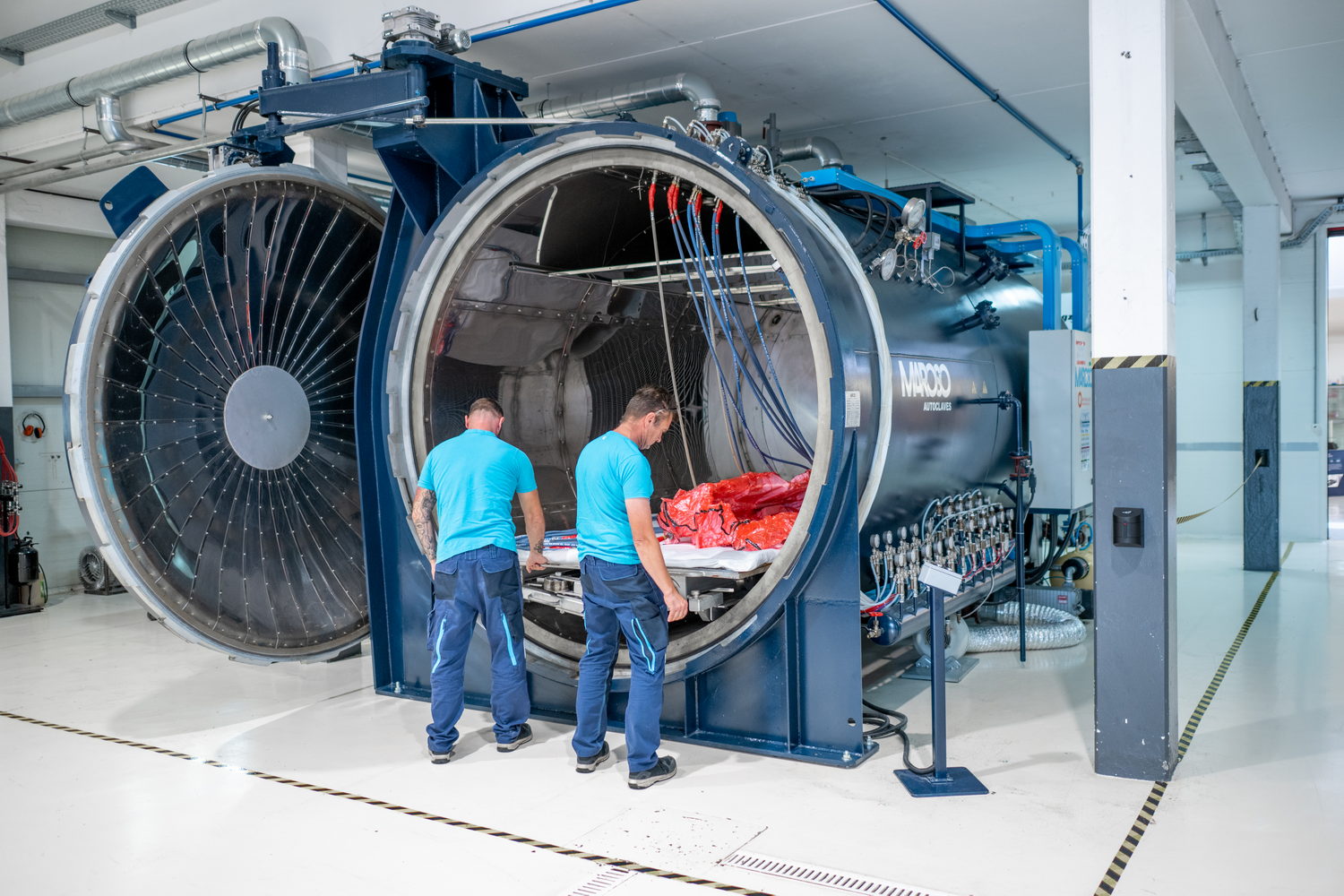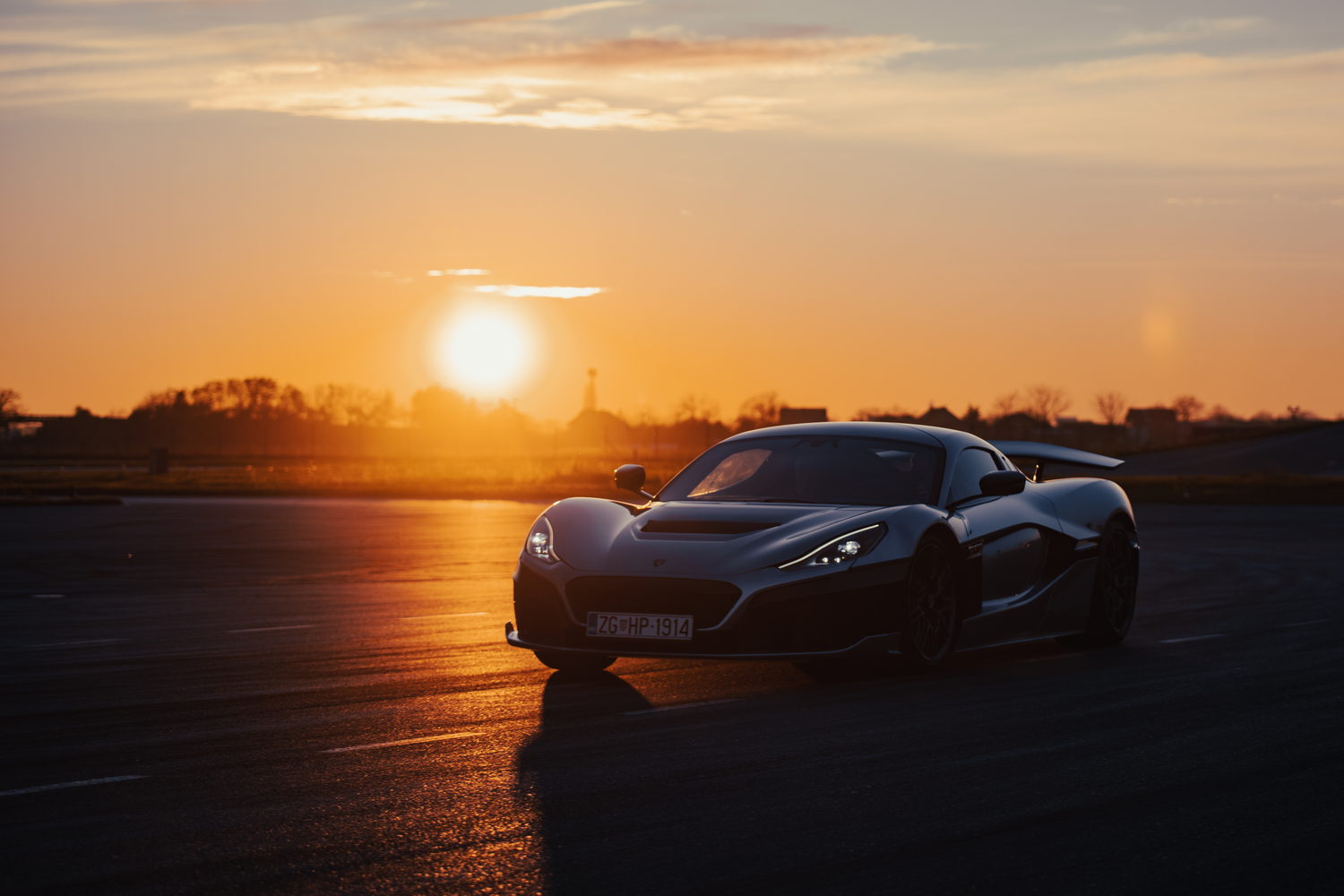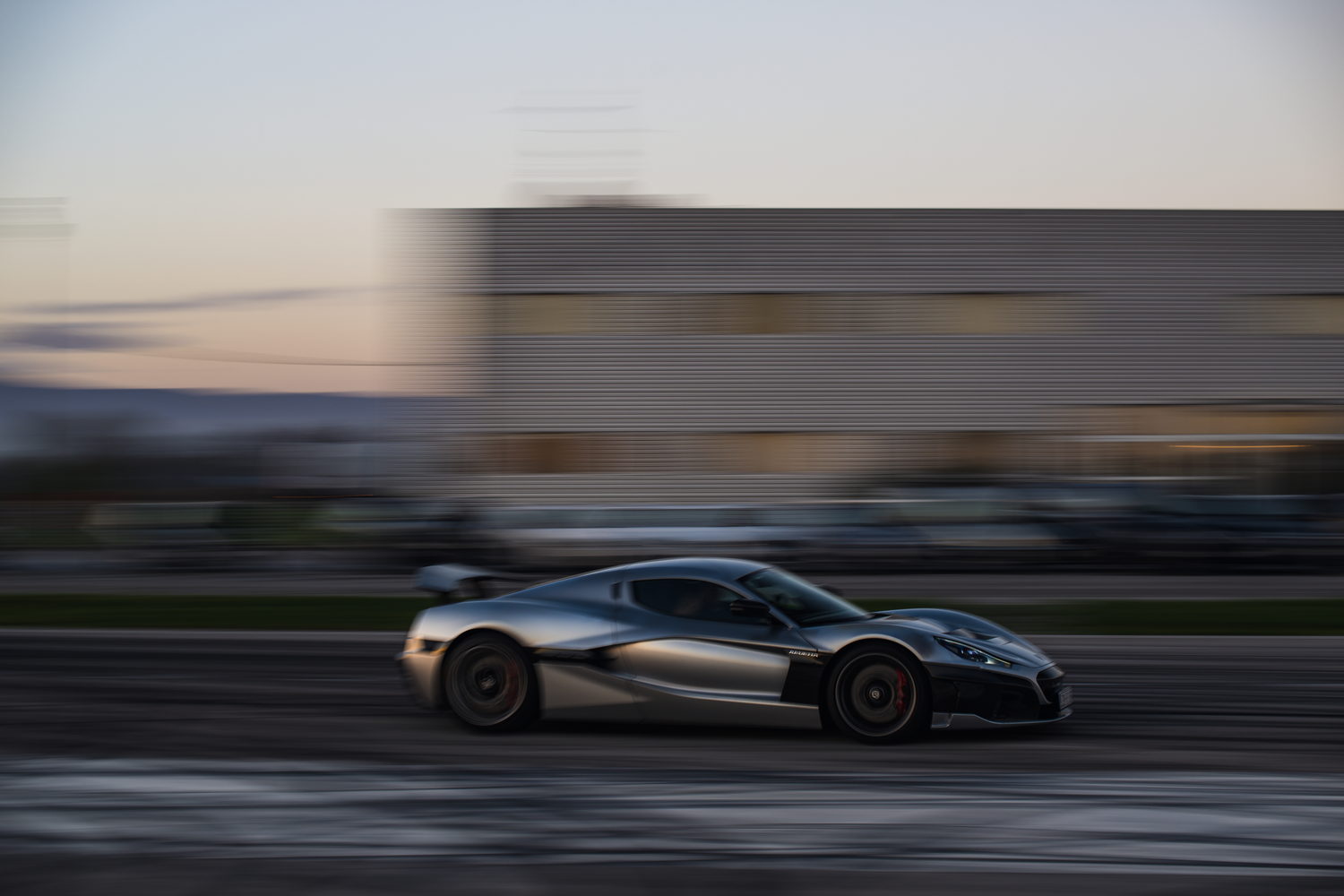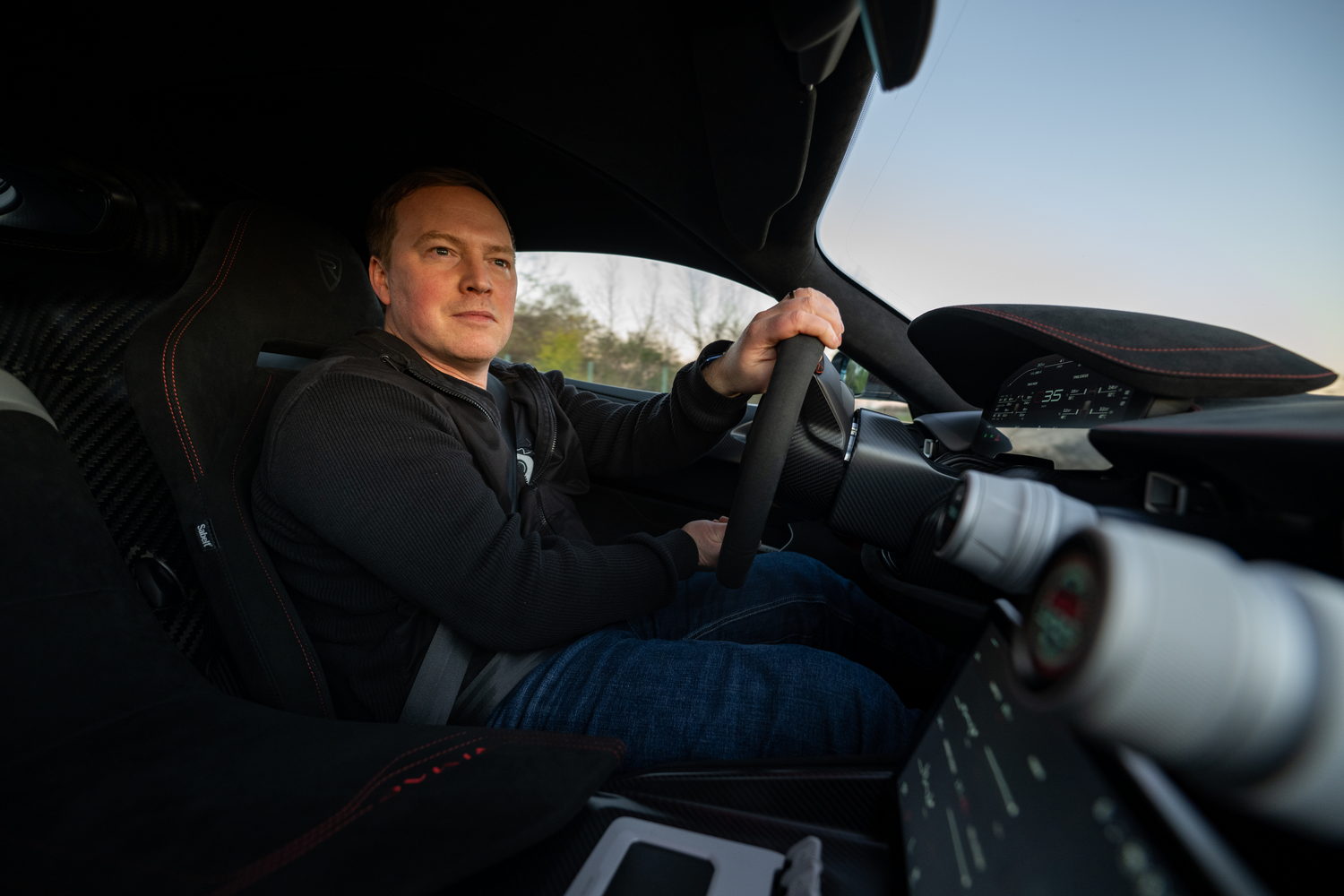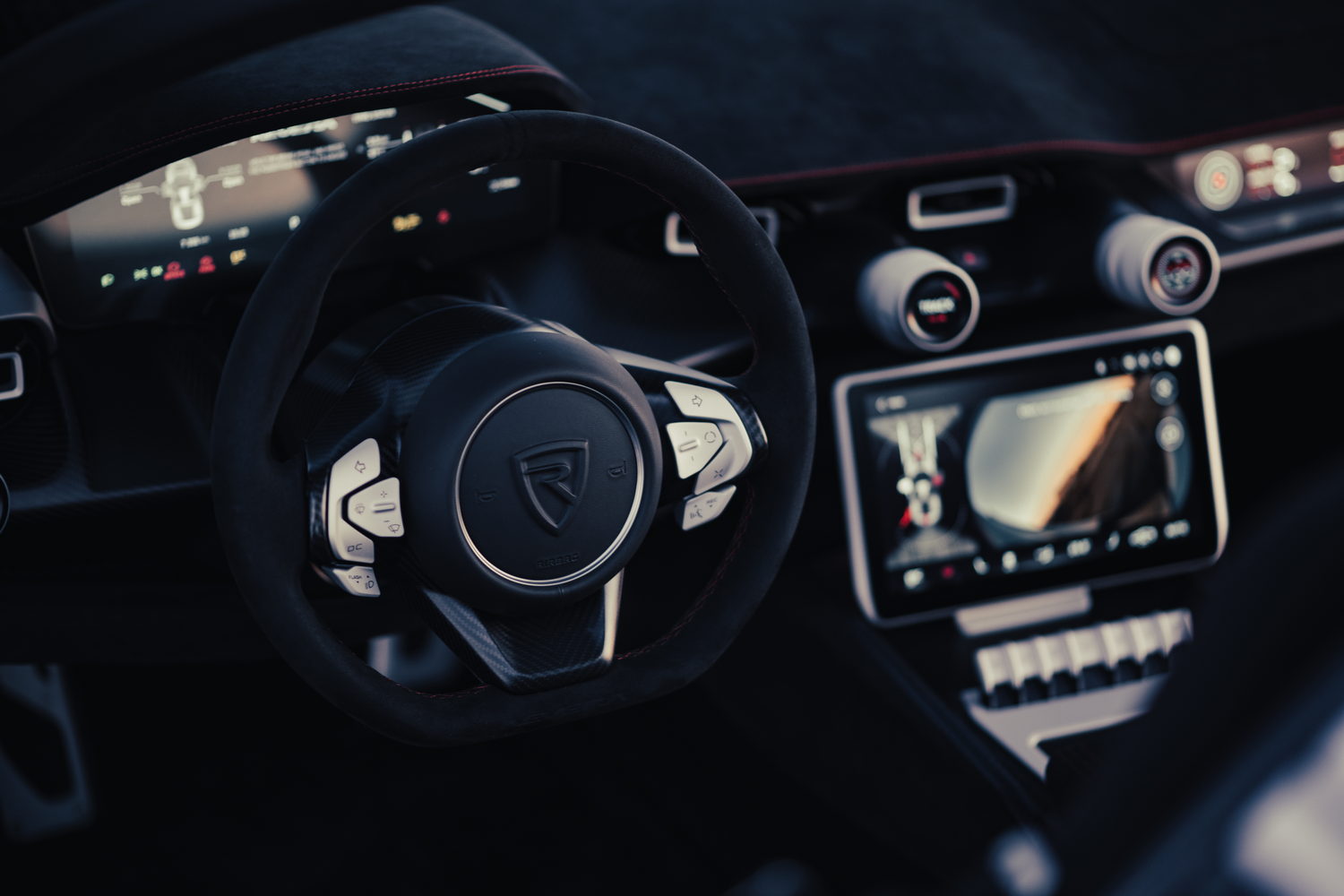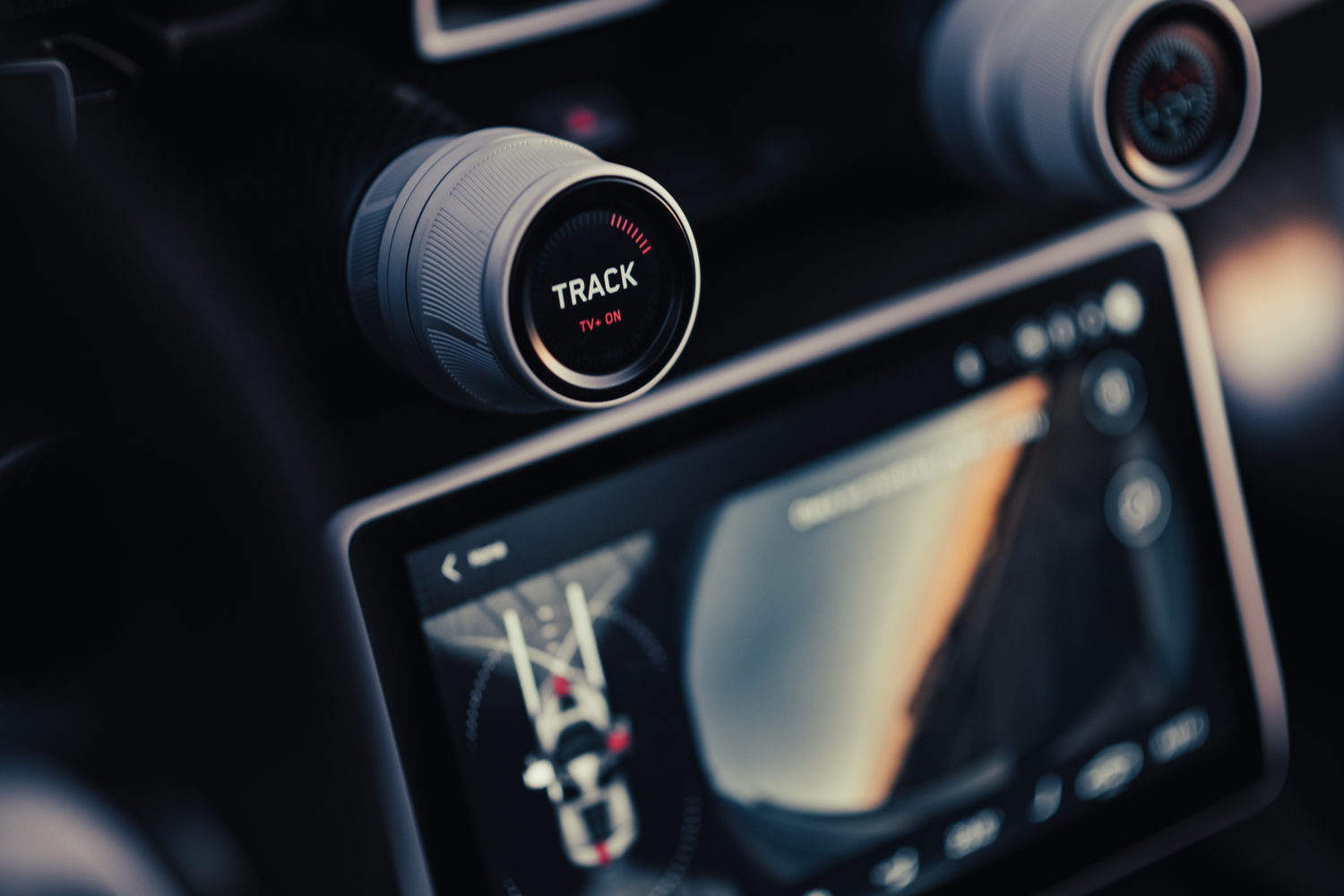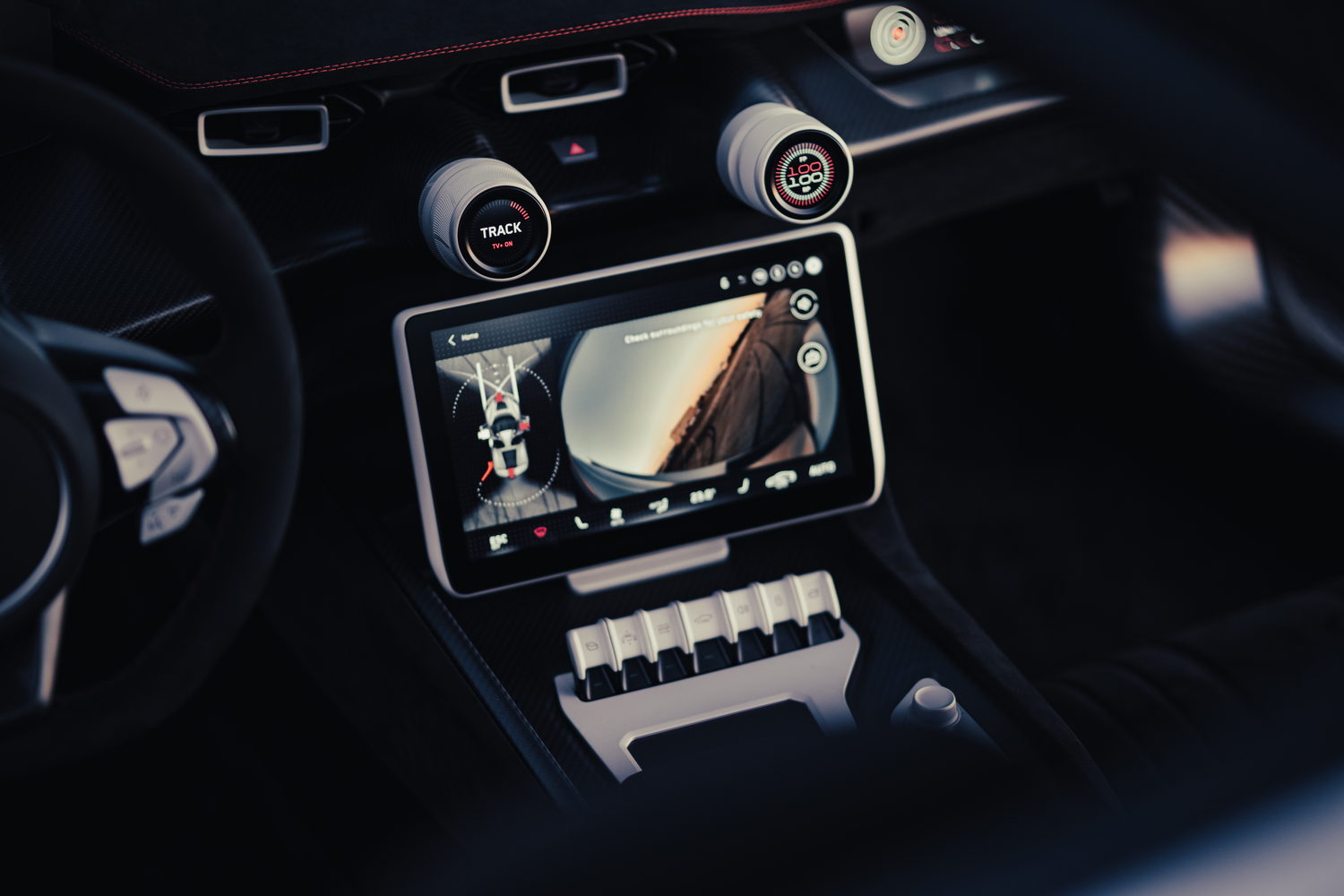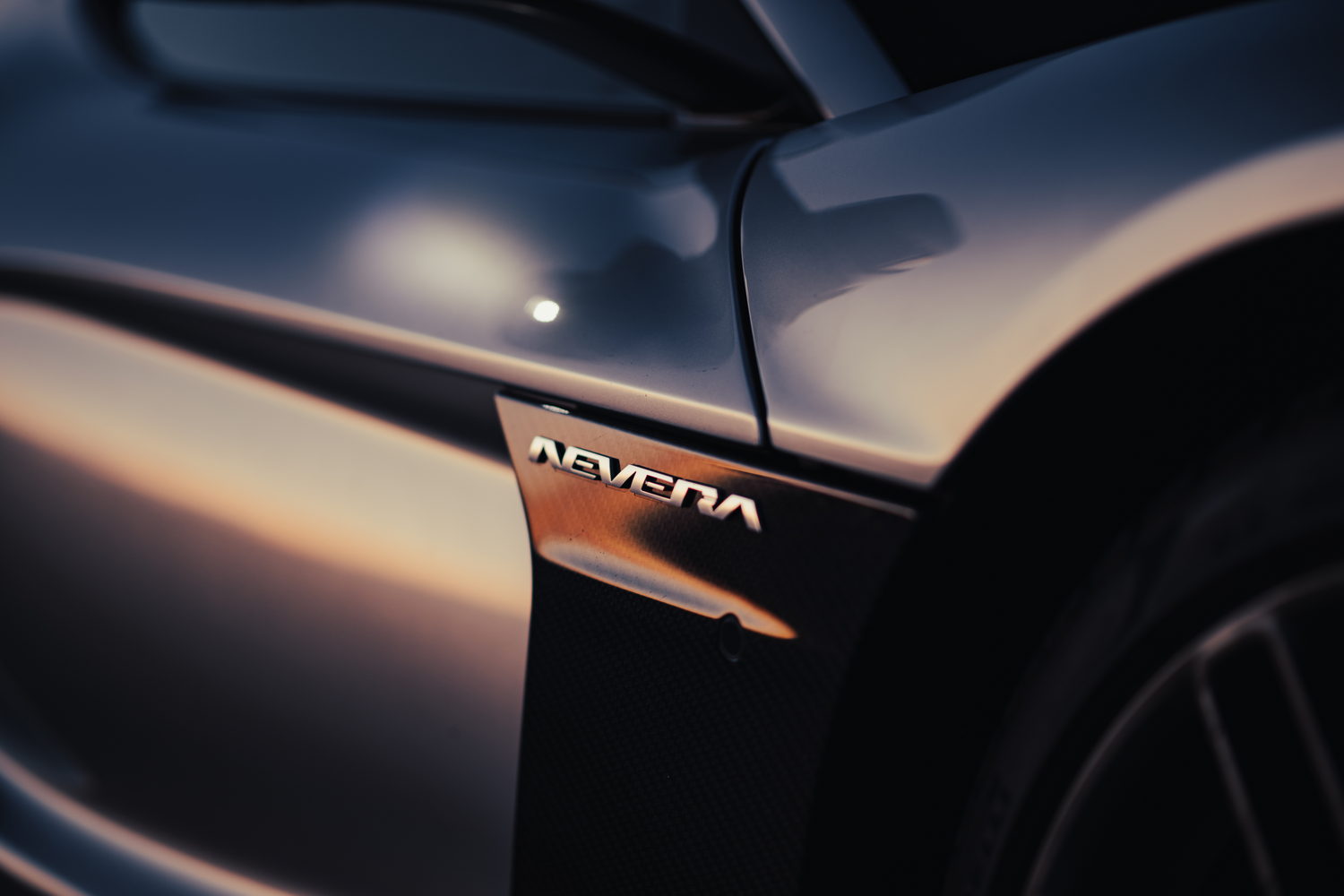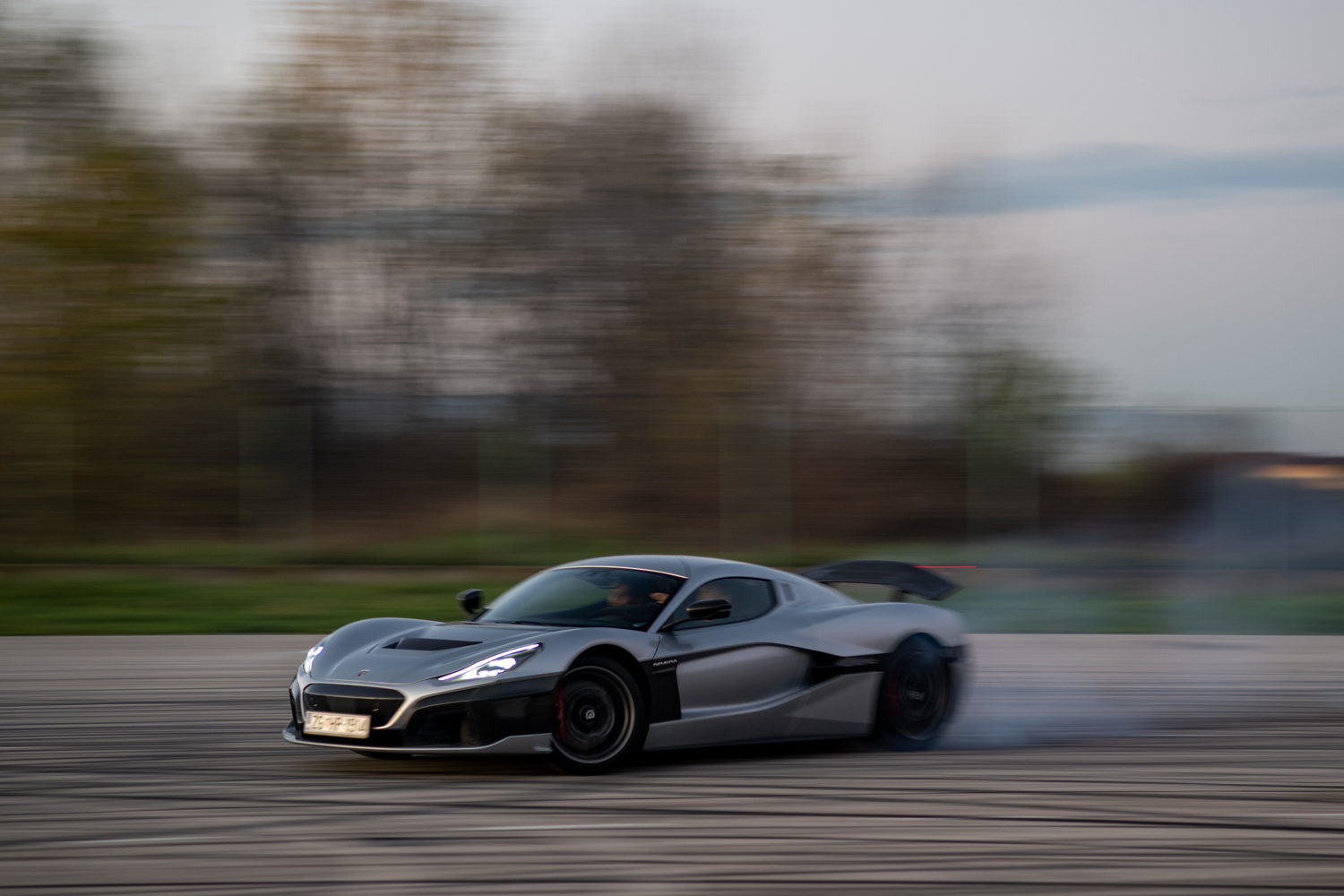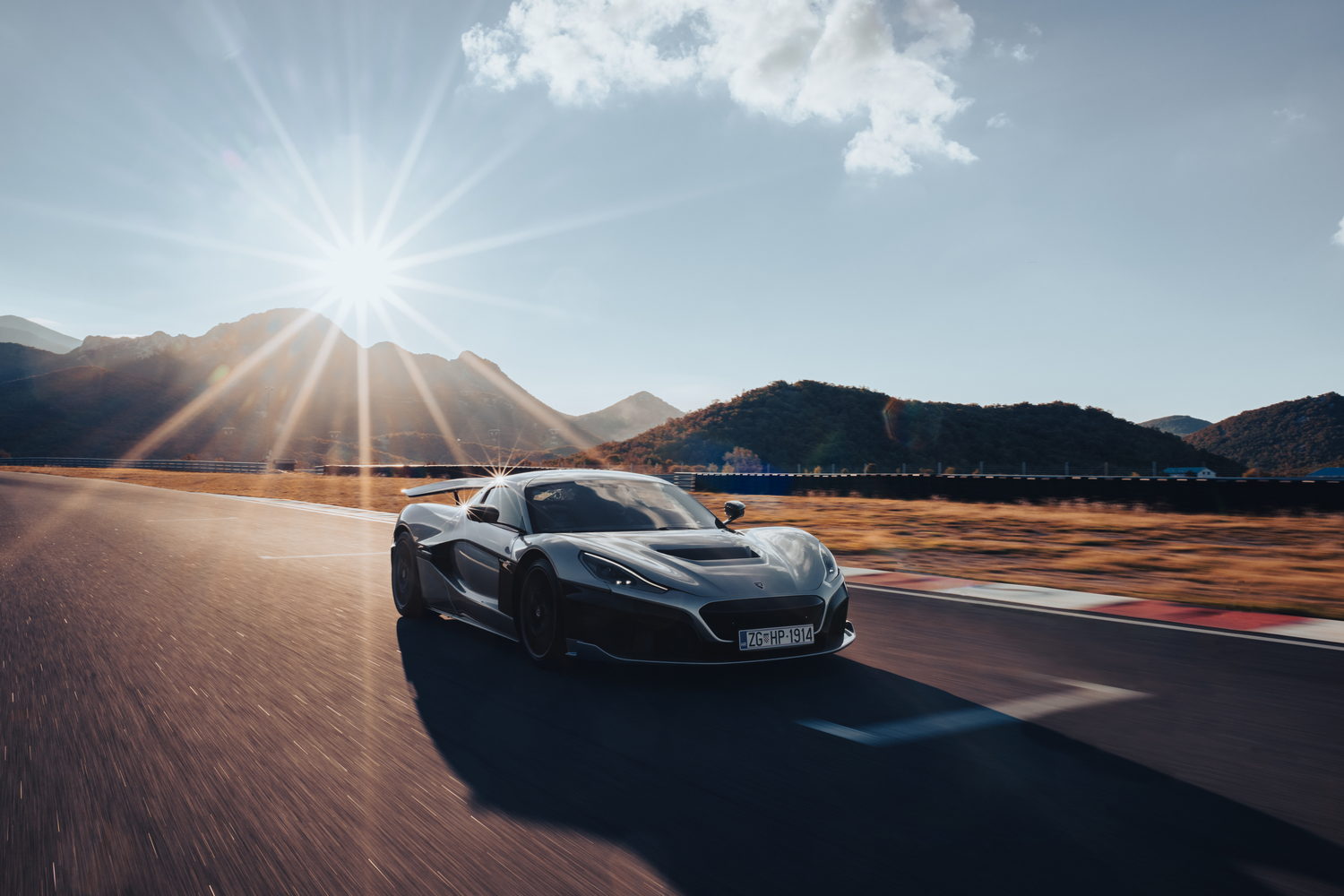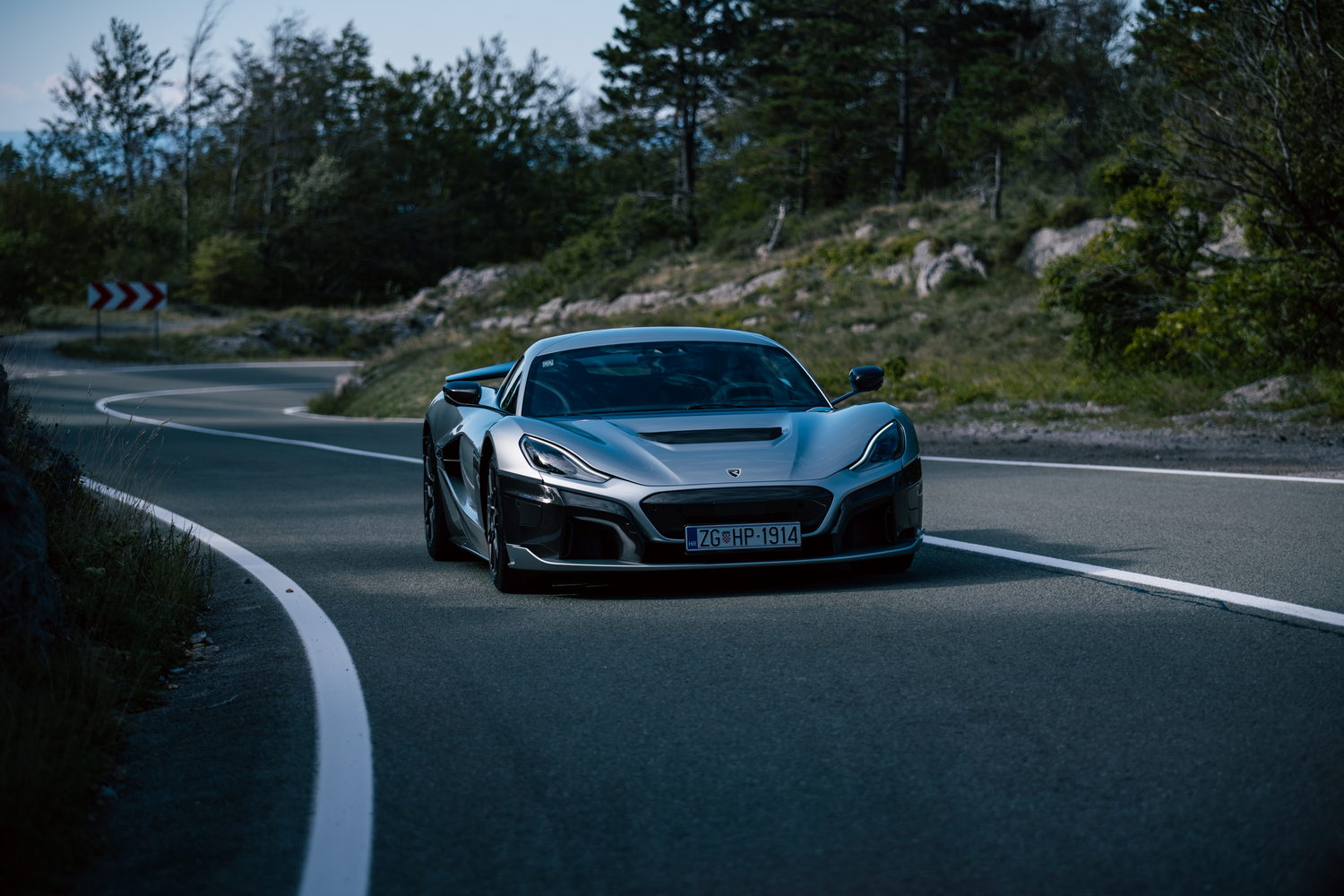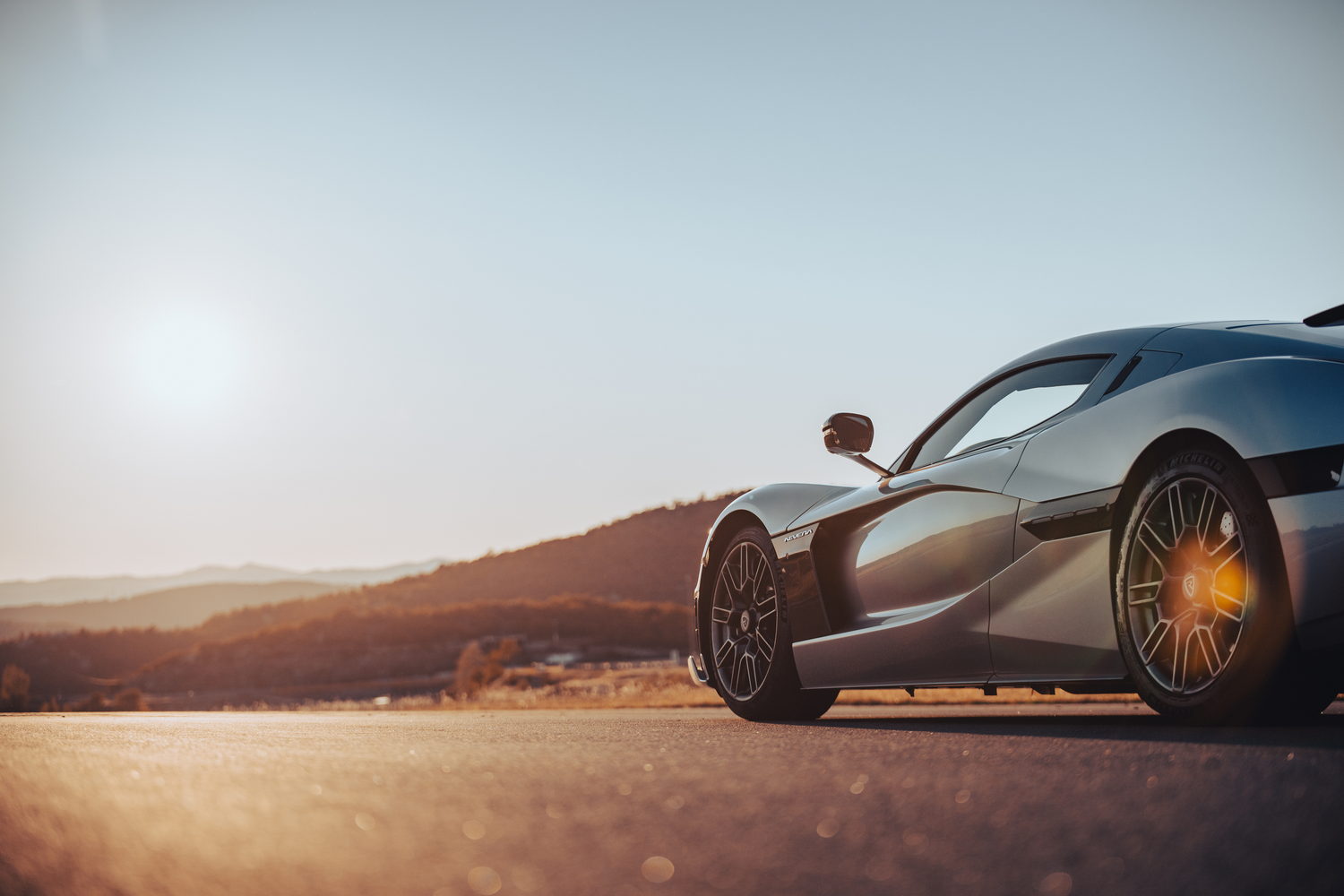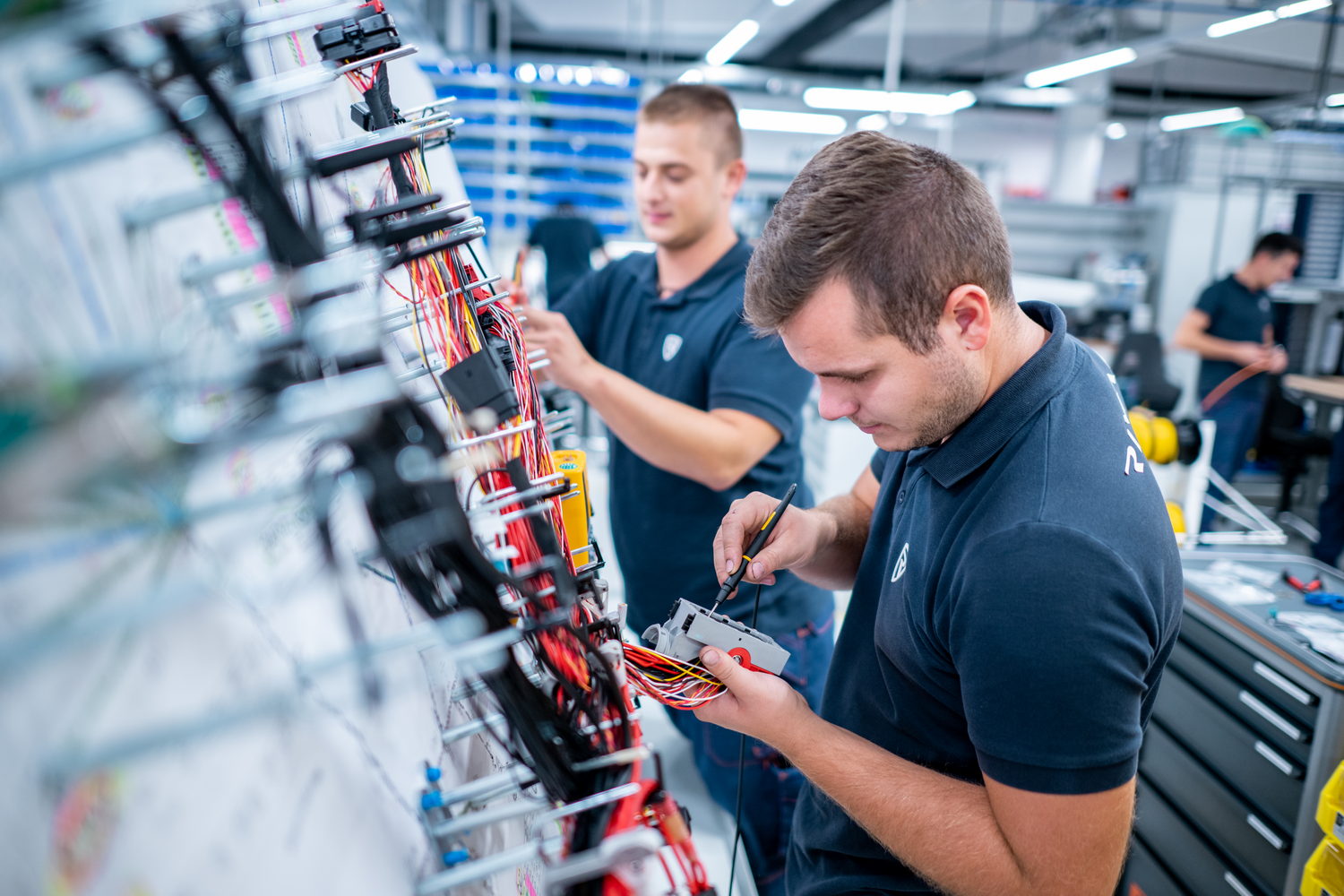Extraordinarily little in the world of cars can prepare you for driving an electric vehicle with 1,914hp and 2,360Nm at its disposal, but those are the numbers that define the Rimac Nevera, an electric hypercar from the high-tech Croatian firm that is on a meteoric rise in the automotive world. Having visited Zagreb to drive the Nevera on road and track, we came away as impressed by Rimac the company as we were this sensational creation. And it's only the starting point.
In the metal
When the butterfly doors are open, the Rimac Nevera looks every inch the traditional hypercar, especially so if its active ride height is set low and the active rear wing is at its highest position. It looks purposeful and fast in this guise. With the doors closed and the wing retracted, it's remarkably subtle, however, though in person you get a better feel for its proportions, as it's incredibly low and wide.
That wing is the most obvious component in the active aerodynamics package that also encompasses elements in the bonnet, under the front bodywork and in the rear diffuser. When in low-drag mode, the Nevera's coefficient of drag is a commendably low 0.3 - to the benefit of range and top speed.
LED lighting is used throughout the exterior, from the restrained design of the headlamps to the rear items that are reminiscent of those found on the BMW i8. On each of the Nevera's flanks, complementing the distinctive sculpting (influenced by the cravat, no less, a Croatian invention), are three larger LED light dots.
They initially call to mind the Le Mans 24-hour race, which has used a similar idea in the past to display a car's position in the event. However, on the Nevera, they change colour depending on the selected driving mode - while buyers can specify a colour pattern if they wish. An Irish tricolour is entirely feasible.
Those dramatic looking doors thankfully take parts of the roof and the side sills with them to make it easy to get in and out. The two seats are located incredibly low down, however, which has been made possible by the packaging of Rimac's large battery pack. It's a H shape, running behind the seats, between them and also across the car in front of the cockpit. It's structural, too.
Beautifully finished carbon fibre is visible in the door frames, revealing the monocoque tub underneath, which incorporates a bonded carbon-fibre roof, rear subframe and crash structures. This construction makes the chassis incredibly stiff in torsion - more so than an LMP1 racer according to Rimac.
The cabin is not that of a stripped-out racer, however, as Rimac wanted the Nevera to be a car that would be used every day. Saying that, there's no wasted material inside. It's quite an 'efficient' design. It's certainly more sporting than luxury, though buyers can of course customise it to their liking, with a wide choice of colours and materials to make it their own.
Deep Sabelt bucket seats and a flat-bottomed steering wheel are standard-fit. The seats are excellent and there's plenty of adjustment of their position and that of the wheel, all done through Rimac's proprietary infotainment system.
That's using the central touchscreen. Another display is mounted on the passenger side and the main instrumentation in front of the driver is digital of course. The graphics are modern and rich and highly configurable.
I'm not a huge fan of the Ferrari-like indicator switches on the steering wheel, but that's offset by the excellent three analogue controls that protrude from the dashboard. To the left of the steering wheel is the drive selector, while the two in the middle of the car allow access to the driving modes and settings.
They can be pushed, pulled or twisted for various functions, and it's a clever way to allow easy adjustment of the various driving sub-systems on the move without resorting to using the touchscreen. Their current settings are displayed on the controls, too, so the driver isn't reliant on the central display for everything.
You won't find any switches in the Nevera borrowed from a mass-market car, either, as everything is made bespoke for this car - most of it at Rimac's own factory.
Driving it
Once you pull the heavy door into place and adjust your driving position to suit, it becomes clear that visibility is fairly good in the Nevera. That's thanks to a low front scuttle. Response to the accelerator is cleverly calibrated so it feels a doddle to amble around at normal speeds in the car, too. You'll be glad of that when in an urban environment, as the Nevera is a wide vehicle and takes a little minding on busy streets - hardly its natural environment.
It feels remarkably at home on the motorway, however, where the adaptive damping allows some comfort - even if the car is always firmly sprung. Unsurprisingly, it effortlessly regains speed when traffic slows you down, but it's a perfectly acceptable car in which to travel longer distances and, so long as you're not accelerating hard, the motors are audible, but not intrusive.
Put your foot all the way down for the first time and everyone goes quiet, in inverse proportion to the rising pitch of the electric-motor sound. There's no synthetic noise here, just the motors and their gearboxes in motion - it's a unique sound and different to that of most other electric cars, more raw, more exciting.
How the car feels and responds depends on which of the may driving modes you have selected. Need to stretch out the battery's energy before you have to stop to recharge? Choose the Range setting. Otherwise, the Cruise mode is ideal for use on the road. We switched into Sport as well and the car is notably firmer on the road in this guise, while the rear wing rises up to obscure part of the view through the back window.
Leaving the motorway, we tackle a greasy back road on the way to the test track. The temperatures are low, so Rimac fitted winter tyres, but even so there's excellent communication through the steering that enhances your confidence in the car. It can be flung around back roads as it feels so biddable. That's remarkable given the car's weight (well over two tons) and the use of steer-by-wire technology.
The Nevera uses brake-by-wire tech, too and, though we didn't like the feel of the pedal when the huge brakes are barely being used on the road, there are no complaints when we arrive at the circuit. There we can explore the Track and Drift modes in safety.
Before we start lapping, it's time to unleash launch control. The Nevera only recently grabbed the headlines with its verified 412km/h top speed, but we won't be hitting such velocity today on winter tyres. Indeed, owners of the car can't just go for that speed whenever they have a runway at their disposal, either, as it requires Rimac's input to ensure it's safe to do so.
Nonetheless, launch control can be used at any time, without asking Rimac's permission and without warning the car that you want to do it. Simply come to a halt, push your left foot hard down on the brake pedal, do the same to the accelerator with your right foot and then release the brakes.
The car shoots forward and accrues speed like few other vehicles. The sprint to 100km/h takes less than two seconds, but perhaps more eye-opening is the 0-300km/h time of 9.3 seconds.
In spite of the hard-to-understand numbers, the Nevera is easy to drive in this manner. In fact, in its default settings, it's possible to use launch control and not hold onto the steering wheel at all as the clever torque-vectoring system keeps the car hurtling forward in a perfectly straight line.
That stability is one of the most memorable things about the car. In my early laps, it took me a while to get used to how quickly the car devoured the straights and arrived at the braking zones, resulting in less-than-perfect apex clipping on my part. But the car soaked it up and safely dealt with it. And once I had acclimatised to the performance? It was nothing short of sensational. That a car with this much power at its disposal should be so agile and adjustable on the limit is staggering.
You can of course undo all the engineers' clever work by twisting the drive mode selector into Drift. We tried it with lots of space to spare and, once used to the instantaneous torque output of the rear motors, found it incredibly easy to hold the car at a big angle with smoke pouring off the rear tyres. Apparently Rimac doesn't switch off the front motors completely, though, using inputs from them to help the driver look more skilled than they might be...
What you get for your money
By any measure, the Rimac Nevera is ludicrously expensive. It would cost north of €2 million to import one into Ireland and register it. And if you need another reason not to consider it, it's only available in left-hand drive. Only 150 will be made so even at that price we suspect Rimac won't have any trouble finding enough buyers - just perhaps not Irish ones.
We wouldn't expect owners of such cars to use the public charging network if they can help it, but the Nevera can nevertheless handle DC charging at up to 500kW, or AC charging at up to 22kW. Officially it can do up to 490 kilometres on a full charge of the 120kWh battery.
Summary
Rimac is a seriously impressive company, perhaps even more so given the lack of any car industry in Croatia's past. It would be insufficient to describe it as a car company, however, as it's very much at the forefront of electric vehicle technology as a whole and set to become a major player in the automotive world. The Nevera is a wonderful showcase for its talents, but somewhat surprisingly one that isn't completely dominated by the car's headline figures.

